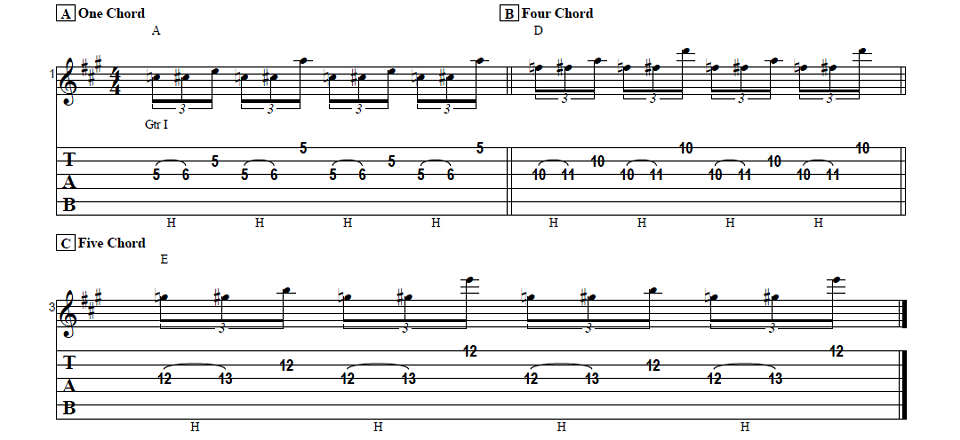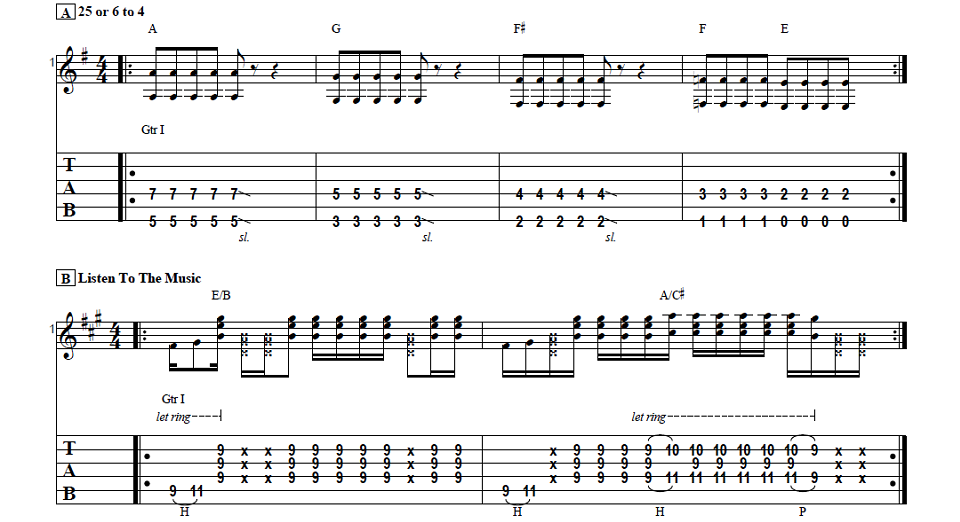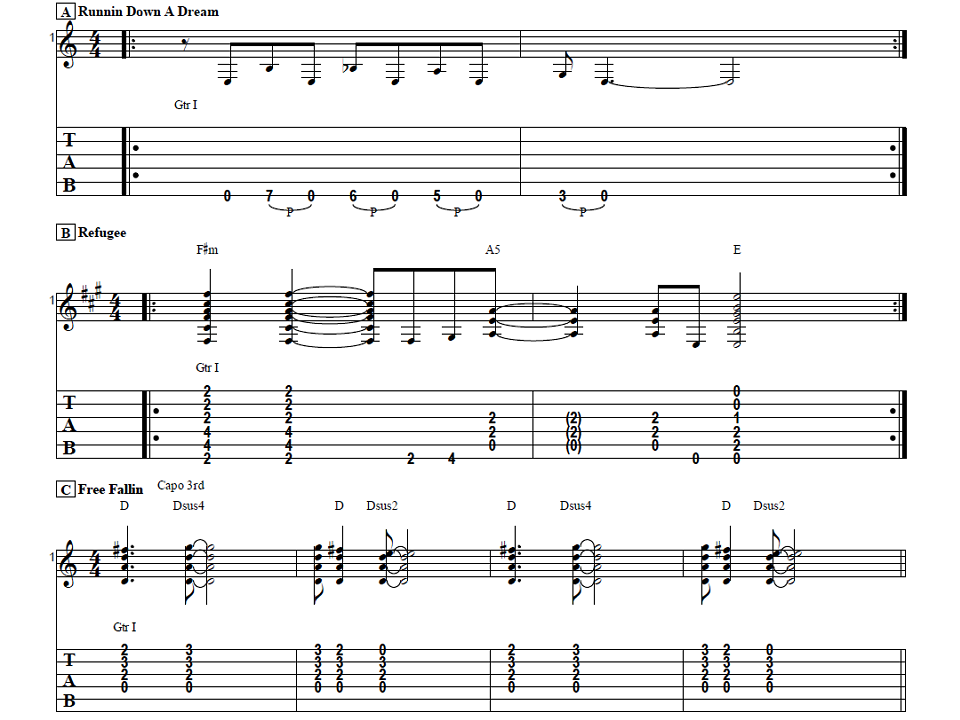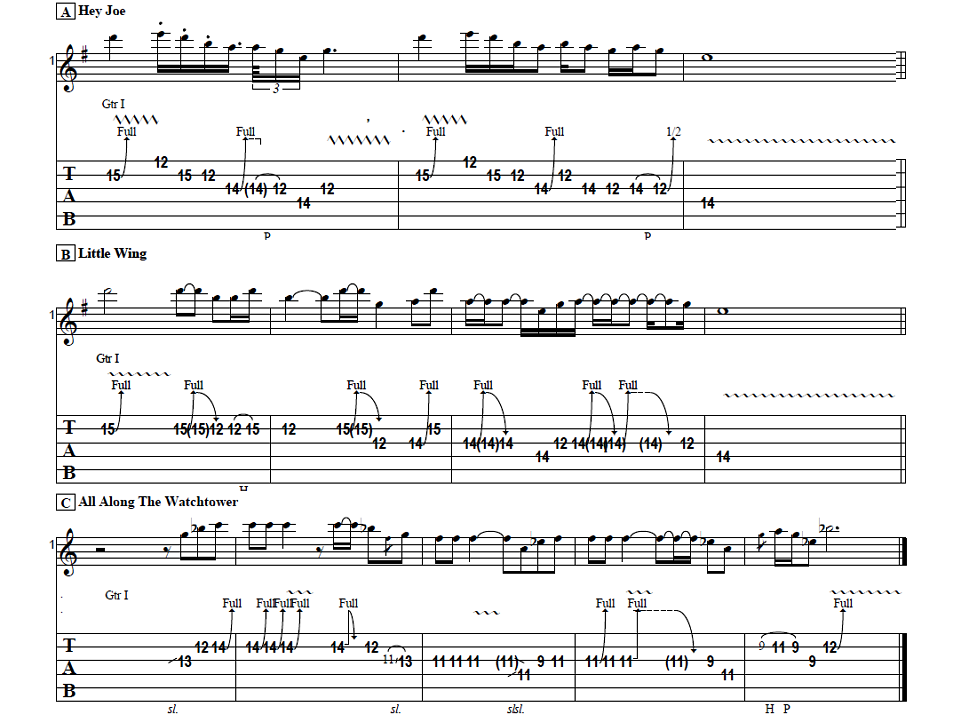Hi, this is Darrin Goodman with Guitar Control, I want to show you
how to play Flight of the Bumblebee. I think its a really great picking exercise for alternate picking for your right hand.
Check the image above to follow the chords and tabs.
Im not really fond of this type because its not diatonic; its completely chromatic. You have all these notes just a half-step apart from each other,
but in this context I think it sounds kind of cool.
Starting off, were on the 8th fret of the 2nd string with your middle finger; to the 7th fret and thats a down stroke, to the 7th fret, is an upstroke. Now we switch to the 3rd string, starting at the 10th fret, and this is a down stroke. Down, up, on 9, down on 8.
Then from there, we go back to the 2nd string, but we start on the 9th fret now: 9, 8, 7, 8; back to the 3rd string and then ascend back up. You simply repeat that sequence over and over again. Something you should practice with a metronome and start off slow and slowly build up your speed. Its a really recognizable lick.
Make sure to subscribe on our You Tube Channel and we’ll see you in our next video lessons, thanks for watching.





